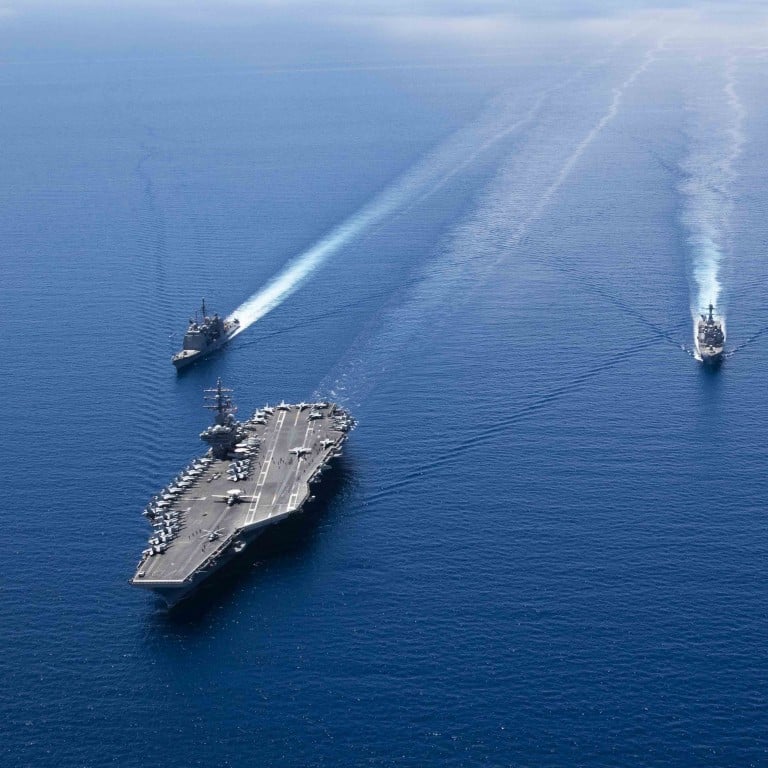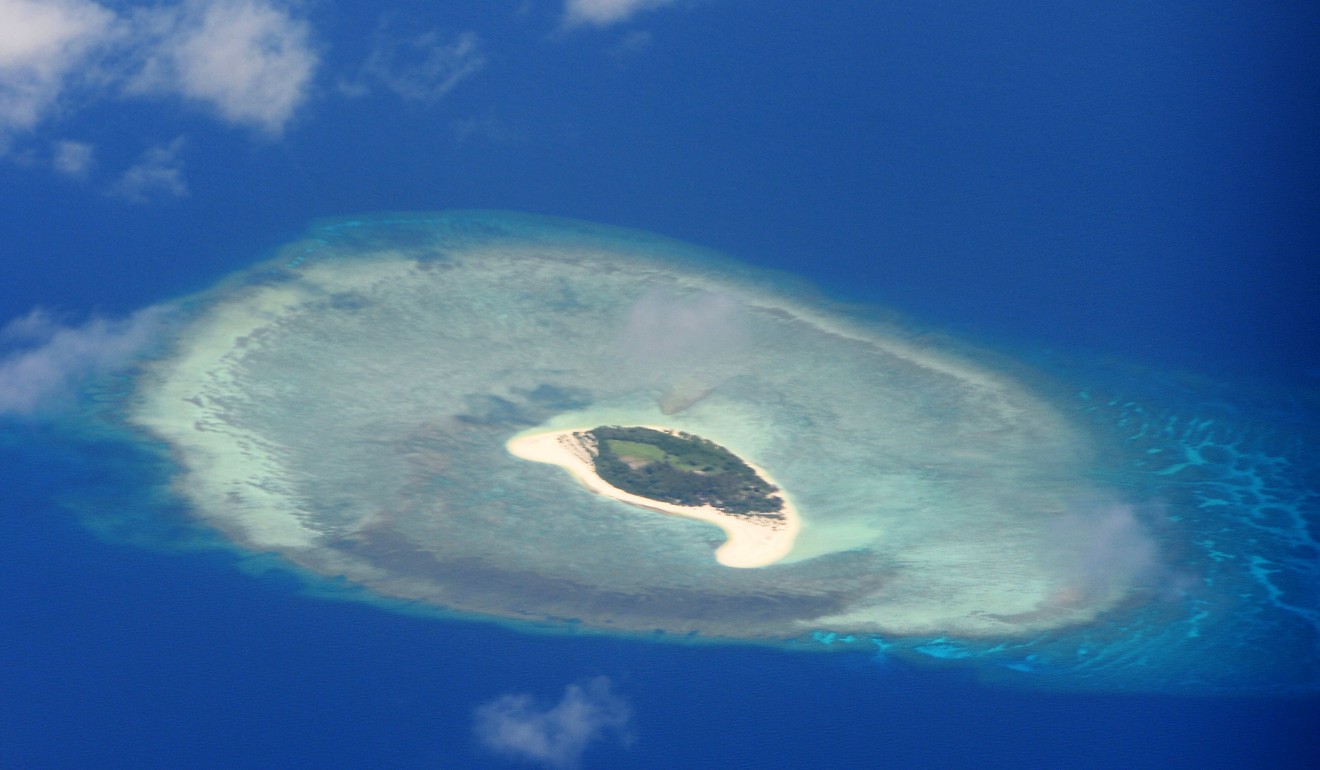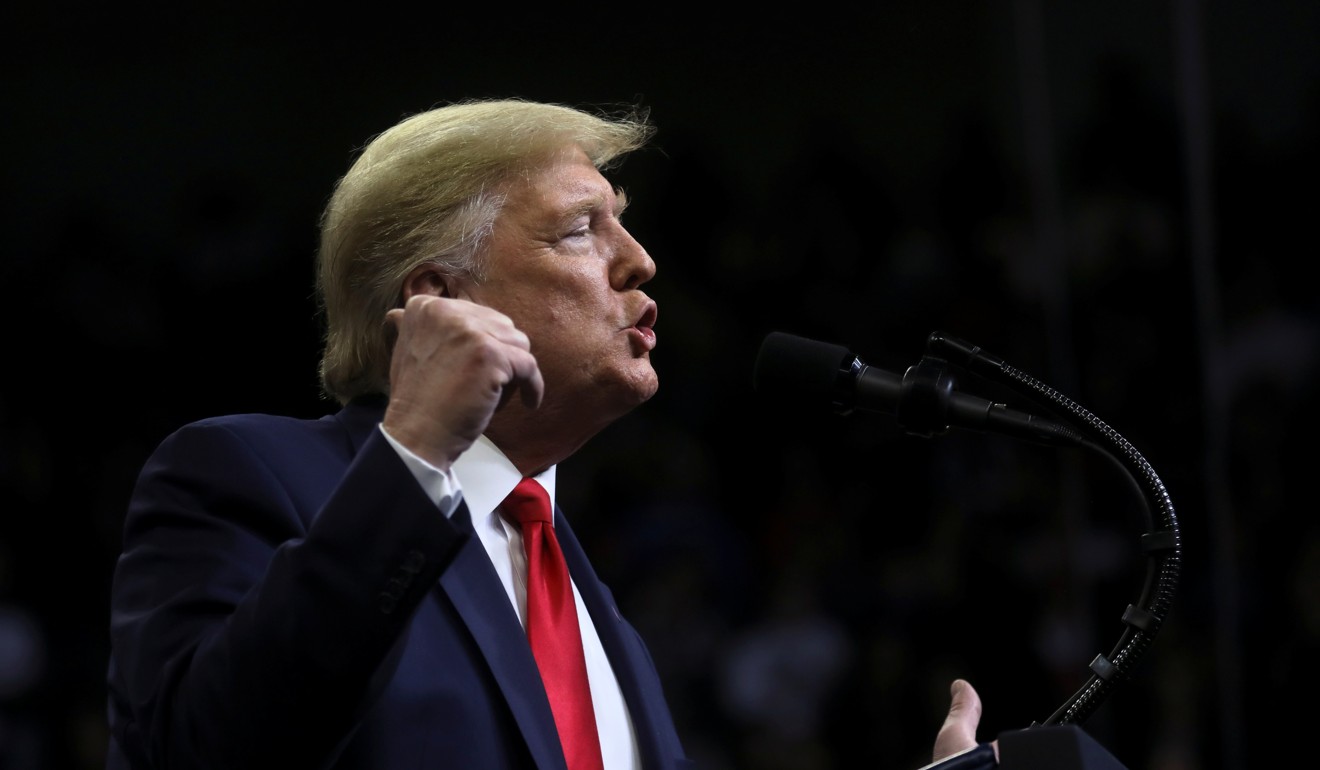
US freedom of navigation patrols in South China Sea hit record high in 2019
- Data obtained by the Post is first official confirmation of the extent of Washington’s patrols in the South China Sea during the past five years
- Evidence of a ‘concrete drive’ by the Trump administration, says expert
US Navy vessels sailed within 12 nautical miles of features claimed or occupied by China nine times in 2019, according to data released by the US Pacific Fleet – the highest number of so-called freedom of navigation patrols (FONOPs) since Beijing controversially began constructing artificial islands around disputed reefs in the waterway in 2014.
Late last month, the USS Montgomery sailed within a few miles of Fiery Cross Reef in the first publicly acknowledged patrol of 2020 in the waterway, where mainland China, the Philippines, Vietnam, Malaysia, Brunei and Taiwan have overlapping claims. Beijing accused Washington of “deliberate provocations” over the patrol near the reef in the disputed Spratly Islands.

The new data, released by the US Pacific Fleet Public Affairs office after a freedom of information request by the South China Morning Post, is the first official confirmation of the extent of Washington’s freedom of navigation patrols in the South China Sea during the past five years.
“These missions are based on the rule of law and demonstrate our commitment to uphold the rights, freedoms, and lawful uses of the sea and airspace guaranteed to all nations.”
South China Sea: message for Beijing in Vietnam, Malaysia defence white papers
Beijing, which claims about 90 per cent of the waters, has constructed militarised island outposts in the waterway in recent years, asserting control over features and waters hundreds of miles from its shore.
Beijing has blasted the US operations, which are not always publicised by Washington, as an attack on its sovereignty and a threat to regional peace and security. An international arbitration tribunal ruled in 2016 that the “nine-dash line” by which Beijing claims most of the waterway has no basis in international law.

“Clearly, under the Trump Administration we see a more concrete drive towards FONOPs in the South China Sea as seen in the incremental build-up in frequency since 2015 and after he took office,” said Collin Koh, a research fellow at the S. Rajaratnam School of International Studies in Singapore.
“The operations do have an effect of emphasising the rule of law, deterring Beijing from more drastic aggression beyond militarisation and coercion – such as outright attacking other claimants’ garrisons and annexing those rival features – as well as generally demonstrating the US security commitment to the region, to show to the smaller and weaker regional states that it still cares.”
Bonnie Glaser, director of the China Power Project at the Centre for Strategic and International Studies in Washington, said the operations, while insufficient, were “important to make credible the US claim that it will fly, sail and operate wherever international law allows”.
Explained: South China Sea dispute
Tong Zhao, a senior fellow at the Carnegie-Tsinghua Centre for Global Policy, said the growing frequency of the patrols reflected the ascendant view in Washington that Beijing sought “to defy the existing international norms and order in pursuing its own interests and that Washington cannot appease it and has to pushback”.
“On the other side, Beijing sees such US activities as evidence that Washington is the black hand that seeks to agitate tensions for the purpose of enduring its own regional hegemony,” said Zhao.
“Thus, China is determined to respond firmly and strongly to each perceived US provocation and is carrying out long-term military infrastructure and capability build-up to secure future advantages.”
Hu Bo, director of the Centre for Maritime Strategy Studies at Peking University, said it appeared the Pentagon was being given a freer hand in setting policy and that Washington was “relying on military operations in the absence of other effective means as well as a comprehensive strategy”.
Correction: in an earlier version of this article, it was reported the US Navy vessels sailed within 12 nautical miles of features claimed or occupied by China seven times in 2019, rather than nine.

